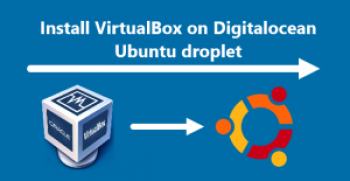- Google Chrome is among one of the top web browsers because of its various features which include its simple and minimal UI, high-speed browsing, security, and automatic updates. It is a cross-platform web browser supported on Linux, Windows, and Mac OS.
Here at Ibmi Media, we shall look into how to install Google Chrome on openSUSE Leap 15.3. For other Linux systems, visit how to install Google Chrome on Ubuntu, Manjaro, Centos, Debian, CentOS, and, Linux Mint.
Ways for installing Google Chrome on openSUSE:
- Google Chrome installing on openSUSE via official Repository.
- Google Chrome installing on openSUSE via RPM Package.
a. Google Chrome installing on openSUSE via official Repository
In order to install Chrome via this method, follow the steps given below:
1. Chrome is by default not available in the openSUSE repositories. To install it, you will first have to add the Google Chrome repository in your system. Execute the command below in your Terminal in order to do so:
$ sudo zypper addrepo http://dl.google.com/linux/chrome/rpm/stable/x86_64 Google-Chrome2. After adding the Chrome repository to your system, you will need to update the local repository. Run this command to do so:
$ sudo zypper refresh3. To verify the integrity of the package before installation, you will need to import the repository signing key through the command below:
$ sudo rpm --import https://dl.google.com/linux/linux_signing_key.pub4. Now to install Google Chrome on your openSUSE system, run the command below:
$ sudo zypper install google-chrome-stableDuring installation, it may prompt if you want to carry on the procedure. Type y and hit Enter.
b. Google Chrome installing on openSUSE via RPM Package
Using this method, you will be installing Google Chrome on openSUSE through the RPM Package available at Google Chrome's official website. To achieve this, follow the below steps:
1. Start by downloading the RPM package of Google Chrome. To download the Google Chrome RPM package, click the below URL to open it in your default browser:
https://www.google.com/intl/en_pk/chrome/Followed by Clicking Download Chrome.
Then select 64bit .rpm (For Fedora/openSUSE) and click Accept and Install button.
Alternatively, you can run the command below in your Terminal to download the Google Chrome RPM package:
$ wget https://dl.google.com/linux/direct/google-chrome-stable_current_x86_64.rpmThe file will be downloaded and saved as google-chrome-stable_current_x86_64.rpm.
2. Now in order to install Google Chrome, run the command below. Before you run this command, ensure that you are in the same directory where the downloaded RPM file is saved:
$ sudo zypper install google-chrome-stable_current_x86_64.rpmDuring installation, it may prompt if you want to continue. Type y and hit Enter.
How to use Google Chrome after installation ?
You can open Google Chrome through the Applications Menu. Press the super key to open the search bar. In the search bar, type chrome. Then click the Google Chrome icon to open it.
How to uninstall Google Chrome from openSUSE ?
You can remove Google Chrome from your openSUSE system anytime if you no longer want it. Run this command in order to remove it from your system:
$ sudo zypper remove google-chrome-stableEnter the sudo password if the Terminal prompts for it. It may also prompt if you want to carry on the procedure. Type y and press Enter. It will remove Google Chrome from your openSUSE system.
[Need help in fixing Linux System issues ? We can help you. ]
Conclusion
This article covers the different ways of installing Google Chrome on openSUSE. In fact, Google Chrome is the most used Internet Explorer software on the earth, which is currently the primary browser of more than 2.65 billion internet users.
How to Update Google Chrome Browser on openSUSE?
To update Google Chrome, run the zypper refresh command in your terminal:
$ sudo zypper refreshThis command should be used regularly to make sure all your system packages are kept up to date.
This article covers the different ways of installing Google Chrome on openSUSE. In fact, Google Chrome is the most used Internet Explorer software on the earth, which is currently the primary browser of more than 2.65 billion internet users.
How to Update Google Chrome Browser on openSUSE?
To update Google Chrome, run the zypper refresh command in your terminal:
$ sudo zypper refreshThis command should be used regularly to make sure all your system packages are kept up to date.















